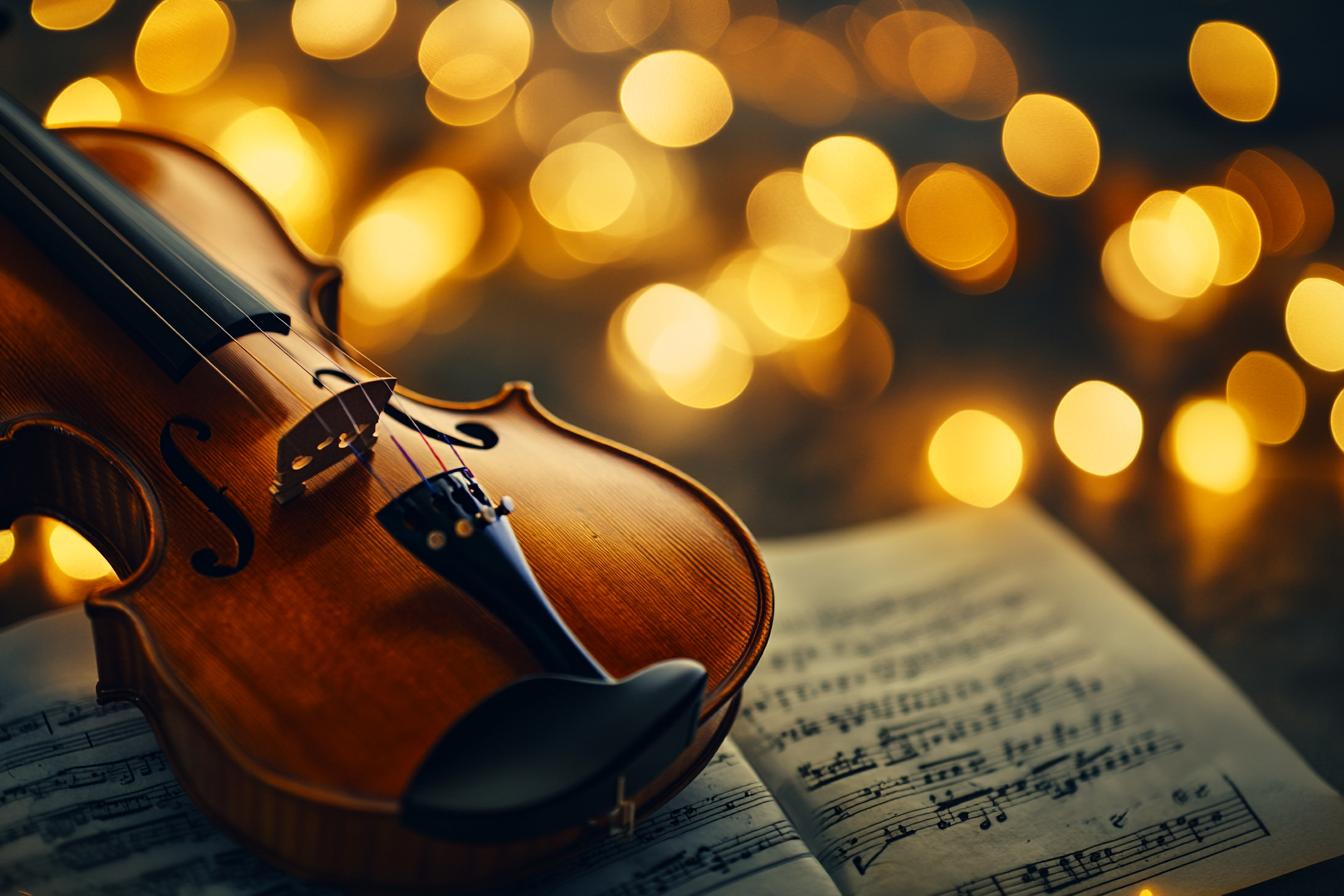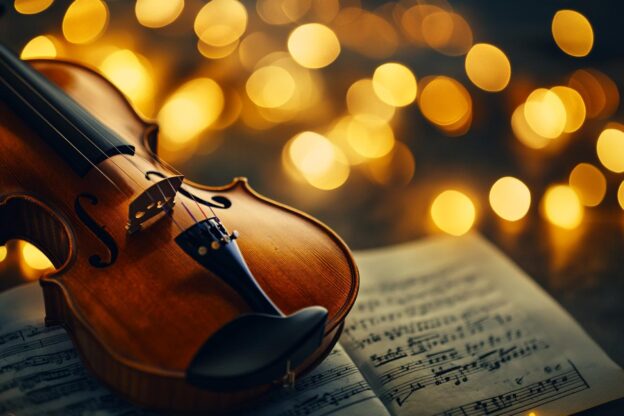Classical music has a long and rich history, and its influence can still be felt in popular music today. From the soaring melodies of Mozart to the powerful rhythms of Beethoven, classical composers have left an indelible mark on the musical landscape. Many of the structures, harmonies, and even melodic ideas found in classical music have been adapted and reinterpreted by popular artists. For example, the use of the “tonic-dominant-tonic” progression, a fundamental structure in classical music, can be heard in countless pop songs. Moreover, many popular artists have drawn inspiration from specific classical works, either by directly sampling them or by incorporating their themes and motifs into their own compositions. This cross-pollination between classical and popular music is a testament to the enduring power of classical music, and it continues to shape the sounds of today.
While classical music remains a vital part of the musical landscape, its presence on radio has evolved. Traditional classical radio stations often cater to a niche audience, focusing on specific periods or composers. However, there are also stations that aim to introduce classical music to a wider audience by playing more accessible pieces and incorporating elements of popular music. This approach has helped to bridge the gap between classical and popular music, making classical music more appealing to a broader range of listeners. One interesting example is the use of classical music in film scores. Many composers have used classical themes and structures to create emotionally powerful and memorable soundtracks. This practice has helped to introduce classical music to a new generation of listeners who might not otherwise have been exposed to it. As the boundaries between classical and popular music continue to blur, it will be interesting to see how classical music continues to evolve and find its place in the world of radio.

Classical Hits and Trends
1. Classical Hits and Trends
Classical music boasts a vast and enduring repertoire, with certain pieces achieving iconic status and resonating across generations. These “hits” often stem from masterful compositions that showcase exceptional technical skill and emotional depth. Moreover, trends in classical music evolve over time, influenced by changing societal values, technological advancements, and the emergence of new musical styles. The rise of Romanticism in the 19th century, for example, led to a surge in passionate and expressive works. Similarly, the advent of electronic instruments in the 20th century paved the way for innovative and experimental compositions.
Understanding classical hits and trends offers a fascinating glimpse into the evolution of musical expression and the cultural forces that shape it. By exploring the enduring popularity of certain pieces and the emergence of new styles, listeners can gain a deeper appreciation for the rich tapestry of classical music. This exploration also reveals how composers have responded to societal changes and technological advancements, leaving a legacy of timeless masterpieces and groundbreaking innovations.
2. Popular Classical Music
You might be surprised to learn that classical music isn’t just for stuffy concert halls and fancy events! There are many classical pieces that have become popular favorites, crossing over into mainstream culture and finding a place in our everyday lives. Think of the iconic “Canon in D” by Pachelbel, which has been featured in countless movies, TV shows, and even commercials. Or, perhaps you’ve heard Mozart’s “Eine kleine Nachtmusik” at a wedding or a romantic dinner. These pieces, and many others, have captured the hearts and imaginations of people around the world, proving that classical music can be both beautiful and accessible.
The popularity of these pieces is often due to their memorable melodies, emotional depth, and the sheer brilliance of the composers. Many of these works have also been adapted for various instruments and ensembles, making them even more versatile and enjoyable. These adaptations, along with modern recordings, make it easier than ever to discover and enjoy classical music, even if you’re not a seasoned concertgoer. So, if you’re looking for something beautiful, uplifting, and timeless, dive into the world of popular classical music and see what treasures you can find!
3. Changing Tastes in Classical
The world of classical music is not static. Like any art form, it evolves and changes with the times. Audiences today are exposed to a wider range of musical styles than ever before, and this has impacted their tastes in classical music. While traditional works still hold a prominent place, contemporary composers are pushing boundaries and exploring new sounds, attracting a new generation of listeners. These new audiences may be drawn to the bold experimentation and emotional depth of contemporary classical music. This shift in taste is also evident in the programming of concert halls and festivals, which increasingly feature contemporary works alongside the classics.
Furthermore, the accessibility of classical music has increased dramatically. Streaming services and online platforms have made it easier than ever to explore a vast catalog of recordings. This has given listeners the freedom to discover works that might not be featured in traditional concert settings. With this newfound freedom, audiences are actively shaping the future of classical music by embracing diverse styles and challenging traditional boundaries.
4. Influence of Composers
Composers, the architects of musical masterpieces, have a profound influence on the evolution of classical music. Their unique styles, innovations, and interpretations shape the trends and directions of musical eras. From the grandeur of Bach’s fugues to the emotional depth of Beethoven’s symphonies, each composer leaves an indelible mark on the musical landscape. They inspire generations of musicians and listeners, fostering a deep appreciation for the intricacies and beauty of classical music.
The influence of composers extends beyond their individual works. They often establish schools of thought, influencing other composers and creating artistic movements. For example, the romanticism of Chopin and Liszt paved the way for a new era of emotional expression in music. Additionally, composers challenge conventions and push boundaries, constantly exploring new sonic territories and expanding the possibilities of music. This ongoing exploration and innovation ensure that classical music remains vibrant and engaging, captivating audiences across centuries.
5. Impact of Technology
Technology has dramatically transformed the way we experience and interact with classical music. Digital platforms have made it easier than ever to access a vast library of recordings, concerts, and scores. Streaming services like Spotify and Apple Music offer curated playlists and personalized recommendations, exposing listeners to a wider range of composers and styles. Furthermore, online learning platforms provide access to interactive lessons and educational resources, making classical music education more accessible and engaging for individuals of all ages.
Beyond accessibility, technology has also revolutionized the way classical music is created and performed. Digital instruments and software allow musicians to experiment with new sounds and techniques, pushing the boundaries of traditional composition and performance. Virtual reality and augmented reality experiences offer immersive concert environments, enhancing the emotional impact of the music. These technological advancements are not only shaping the future of classical music but also fostering a deeper connection between artists and audiences.
Conclusions
So, there you have it! From the golden oldies that never get old to the new wave of composers shaking things up, classical music on the radio is a constantly evolving landscape. We’ve seen how the popularity of certain pieces changes over time, how technology has given us access to a wider range of music, and how influential composers continue to shape the genre. Whether you’re a seasoned listener or just starting to explore the world of classical music, the radio is a great place to discover new favorites and enjoy the timeless beauty of these masterpieces.
